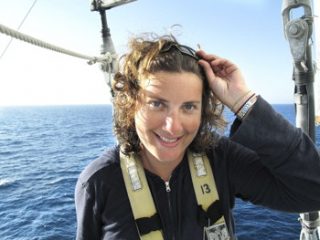This Halloween, we found ourselves in what may some regard as a relatively spooky environment: 1646m deep, on the bottom of the ocean, under bone-crushing pressure that is 160x more than normal, alone in the most remote part of the Pacific, in a place where light never shines, and distant sounds only echo hauntingly.
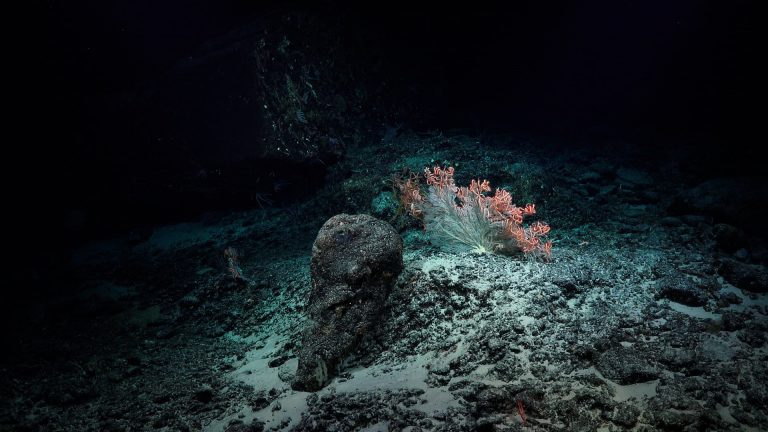
Although we are near the equator, it is 2.6 degrees C in these deep sea environments, and we are working on seamounts that have never been mapped – let alone seen – prior to today. We are in a part of the Pacific so remote that the closest humans to us are on the space station. But fear not: although everything I have said is true, we are safe on the surface, surrounded by colleagues, navigating an unmanned undersea robot for the sake of science.
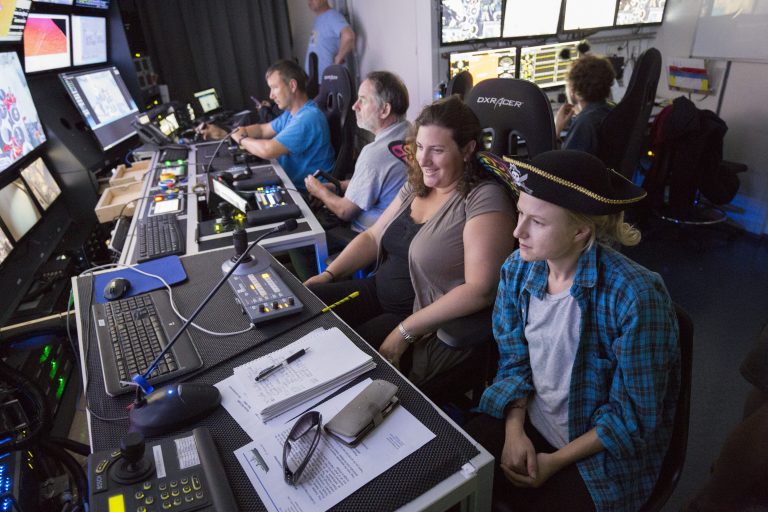
We spent last night using the ship’s high-tech multibeam systems to generate a 5-m gridded high definition bathymetric map, so that we could choose a dive site, and then lower a new, custom-built submersible, a remotely-operated vehicle (ROV) named SuBastian, owned and operated by the Schmidt Ocean Institute. Fast forward an hour later, and here we are – with a map and a robot – and rapidly (by the second!) acquiring 4K images of deep sea creatures that have never been seen, in a place that has never been explored, using technology that is newly invented. We are a diverse team of scientists and engineers working to sample corals and other marine invertebrates using a variety of techniques: suction sampling, coral cutters, and some new soft robotics technology “squishy fingers” and “linguini fingers” (developed by the Wyss Institute at Harvard) to sample delicate and gelatinous targets.
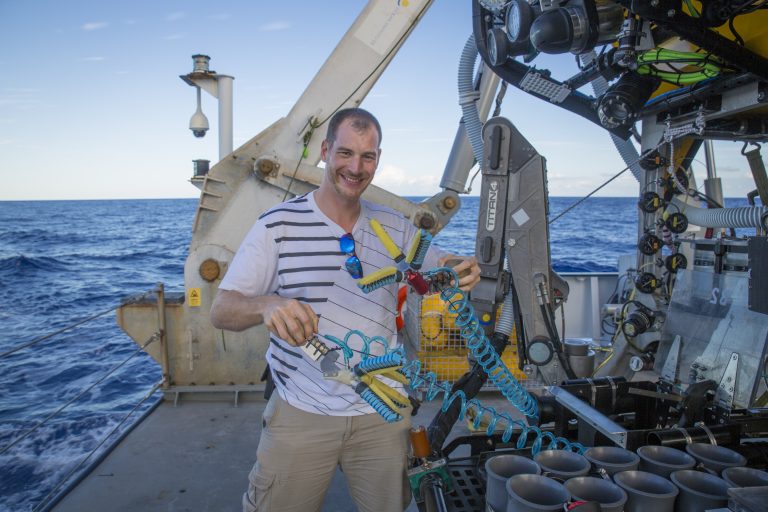
Not only are we using this incredible technology to look at this incredible biology, but we’re doing it in a special place that I have been privileged to work on and with for almost a decade – the Phoenix Islands Protected Area (PIPA), for whom I am the co-Chief Scientist. PIPA is owned by the Republic of Kiribati, and I have had the honor of supporting this country by helping to design and advance the scientific research program for the entire California-sized, uninhabited, remote marine protected area.
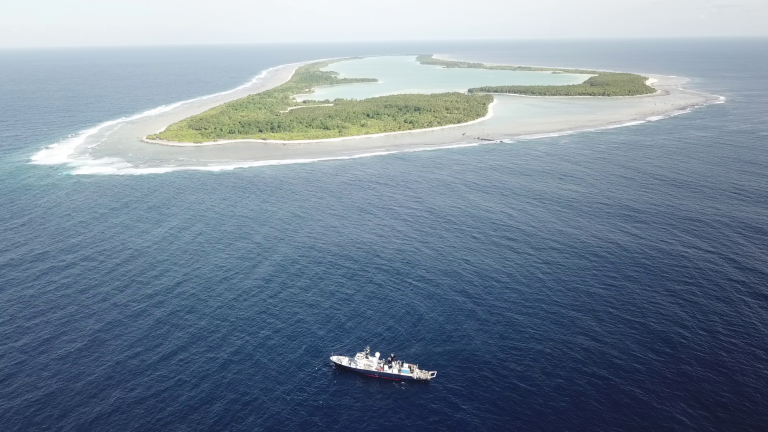
So. Where are the ghosts?
We are diving on ancient volcanoes, 50-80 million years old, that are haunted with history. There are some corals that are estimated to be thousands of years old, still alive, still thriving. But then there are those that have died, evidenced now only their rubble, or their ancient calcareous bases and stalks still standing as a tombstone, marking the grave of a deep sea marine invertebrate that once was. There are iron-manganese crusts, a sign of slow and steady precipitation of minerals over time, accumulating over basaltic substrates, blanketing the former volcano. And finally, there are the living invertebrates – so many of which are clear and ghost-like (transparent or translucent) – with pale or shimmery coloration – just quietly sitting on the lightless seafloor, eating marine snow as it gently falls from the surface.
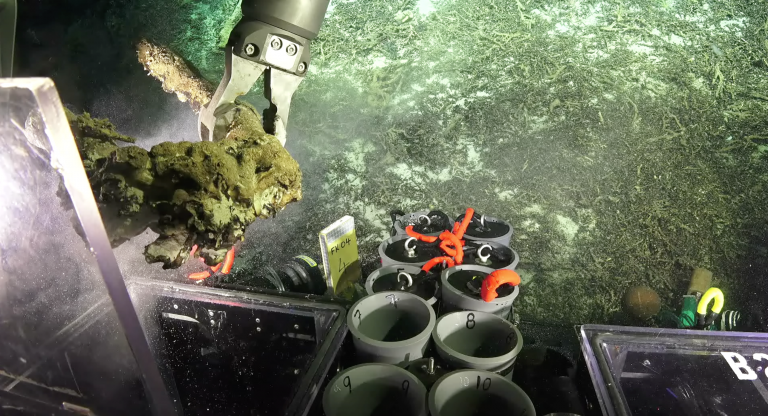
We are here to document, collect, and study some of these organisms. This process will establish a baseline inventory of deep sea creatures for PIPA, as well as illuminate species-specific interactions between corals and their predators, and their microbes (in collaboration with Anna Gauthier and the Kagan Lab at Harvard, the Shank Lab at Woods Hole Oceanographic Institution, and the Cordes Lab at Temple University). Together, we are examining the ecology, morphology, histology, genetics, and microbial ecology of these organisms and communities to help support conservation science in this fully protected, no-take area.
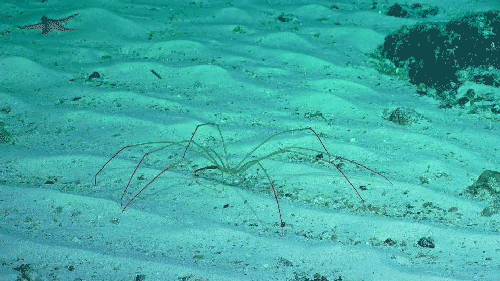
Tricks and Treats
Along the way, we’ve been tricked and treated. The tricks? Some elusive samples have literally fallen between our robot fingers, denying science the opportunity to study them. Some haloed corners of our screens have whispered excitement, but have turned out to only shadows or oddly-shaped rocks. The treats? New discoveries, almost by the hour. Fair weather. Calm seas, a collaborative and energized ship with 42 people working towards this common goal of discovery, science, and engineering. The joy of narrating our dives live to our friends and family back home, and an anonymous audience of over 600,000 viewers who are tuning in to see these incredible habitats with us.
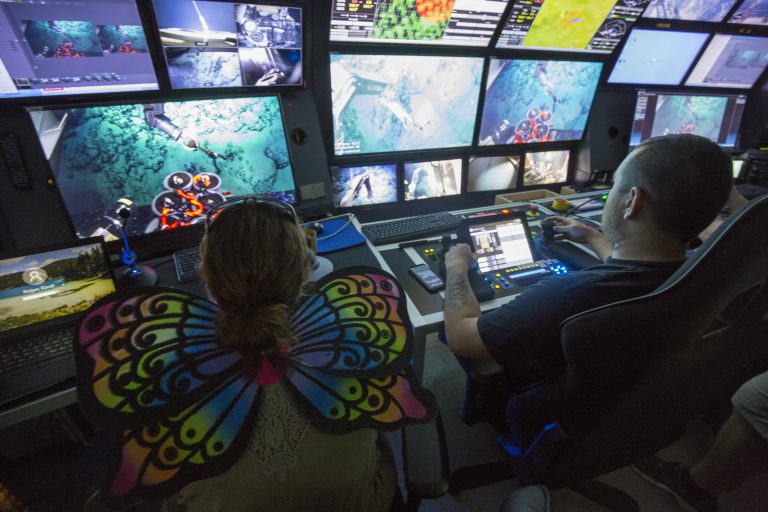
Ghosts are everywhere, but we are more interested in the magic of science. Through careful thinking, hypothesis-testing, engineering, natural history and curiosity… we do not need a costume or a mask this Halloween. We are scientists, and this is as real as it gets: No tricks. ;-) Happy Halloween!
